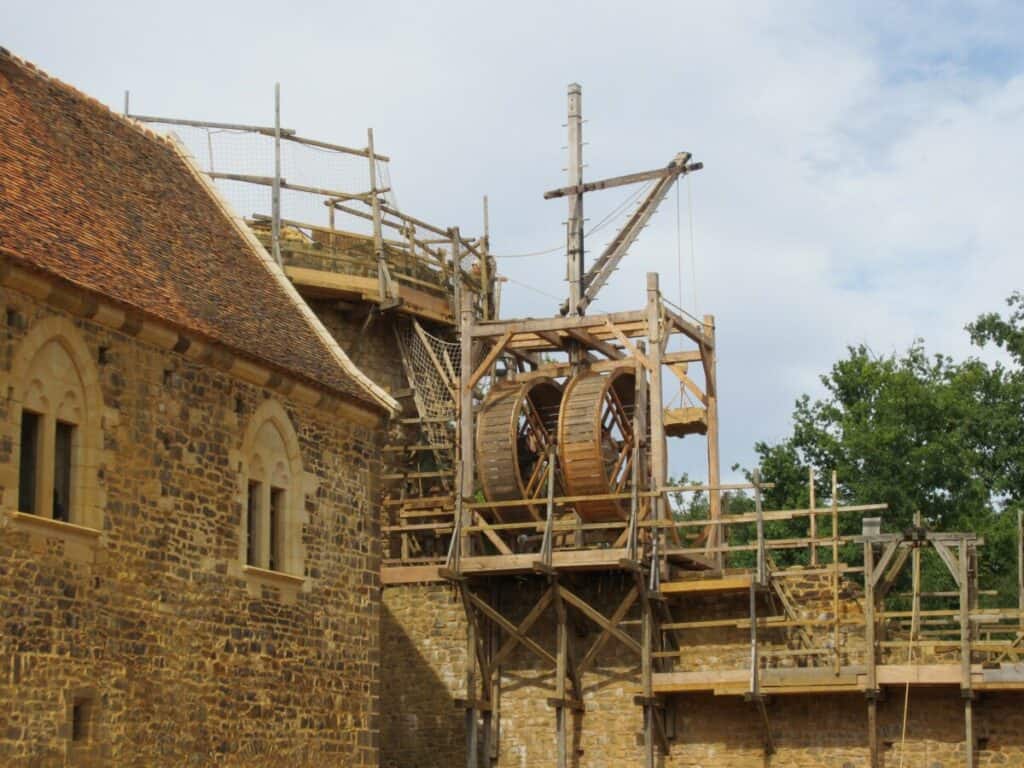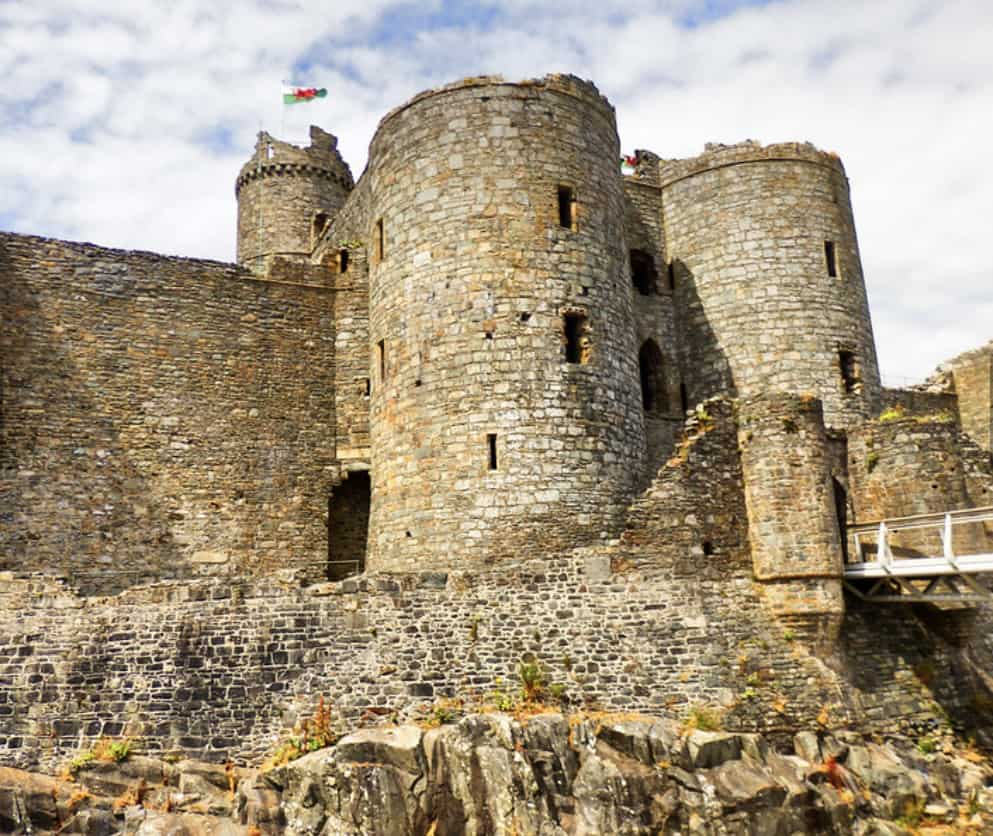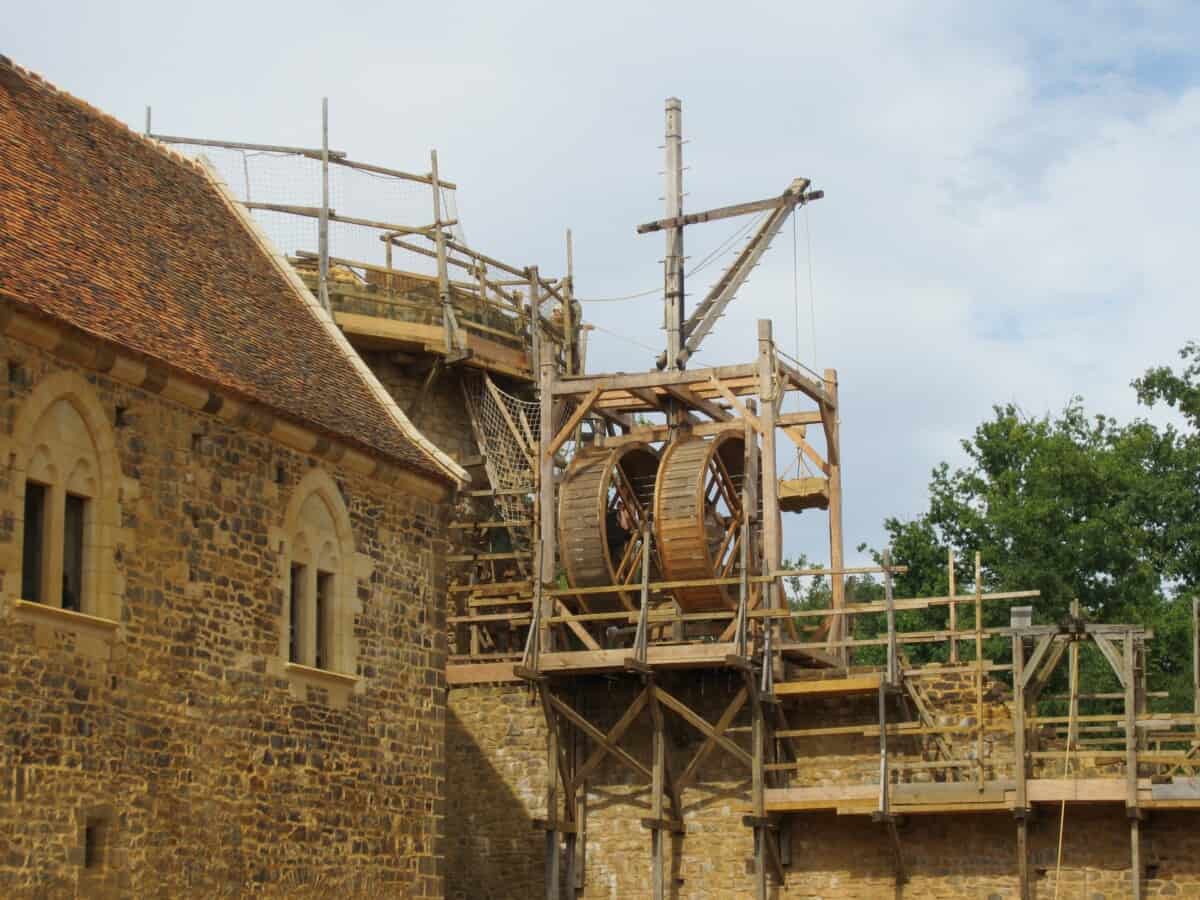Castle-building has been a costly affair in any period of human history. Have you wondered how much it was to build one in medieval times?

Building a castle in the Middle Ages could cost anywhere between £1000 and £30 000 equivalent to the modern $4 000 000 to $120 000 000. The castle construction expenses varied depending on the size, location, country, currency, logistics, and foundation year.
As we analyze a whole millennium between the 5th and 15th centuries, you will probably be surprised by how much the budget could vary between these medieval buildings.
Cost of King Edward I’s castles built in Wales
Thanks to survived records from 13th-century chronicles today, we have exact numbers for budgeting a castle construction back then.
In the aftermath of a possible revolt, Edward I built castles at astonishing speed, which might have taken a higher price than usual to build a fortress.

Paul Murray Harlech Castle
So, from the summer of 1283, when the works commenced, King Edward I spent a total of £10 000 on Harlech castle, £15 000 on Conway and £27 000 on Caernarfon castle.

Caenarfon Castle
How much a master mason got paid when building a castle?
During the middle ages, castles needed highly skilled craftsmen at the top of their professions. Such artisans back then who would help build a castle were called masons.
The more experienced were called ”freemasons” because they were capable o carve more expensive stone ”freestone” without wasting a lot of it.

There were different types of masons; the person at the top of the ranks was known as a master mason.
A master mason planned, designed, and supervised the castle’s whole construction, the building site, and the staff.
He would be in charge of such staff as carpenters, quarrymen, stonemasons, blacksmiths and more.

One of the most popular master masons in the Middle Ages was the master James of Saint George, described by historian Marc Morris as “one of the greatest architects of the European Middle Ages”.
Initially constructing castles in Savoy, France, he came to England under King Edward I’s invitation to work on the projects like Conwy, Harlech and Caernarfon (all begun in 1283) and Beaumaris on Anglesey (started 1295).
In the early days of castle-building, all the staff who worked on-site would get their wages in the form of corn, wine, oil, and on an odd occasion, they would get a coin of the realm.
They got these types of wages because back then, they valued high goods from the east.
But, there was no set amount to what a master mason would earn, in all honesty. It would all depend on the castle owner and the type of castle built.
How much labour got paid in building a castle?
Typically when a castle was built, it required a mix of skilled and unskilled labourers. The skilled workers were usually cutting and laying stones and unskilled, helping them and carrying materials.

According to the Medieval List provided by Berkely, labour would cost the following:
● Unskilled workers (household servants, peasants)- 1 penny each day they worked and 30 pence in a month.
● Tradesmen (masons, carpenters)- between 4-6 pence each day and 150 pence every month.
● Professionals (priests and soldiers)- On average, 12 pence each day and around 720 pence per month.
● Artisans (high up lawyers)- 240 pence per day and about 7,2000 pence per month.
● Barons (these were people in charge of the country)- 240 per day and around 7,2000 pence per month.
● Earls (in charge of some regions of the country)- 3,600 pence per day, totalling too 108,000 pence per month.
● The crown (king or queen)- 19,680 pence per day and around 594,000 per month.
For example, in the summer of 1286, at Harlech castle, 546 general labours, 115 quarries, 30 blacksmiths, 22 carpenters and 227 stonemasons worked simultaneously on-site.
How much materials cost when building a castle in the Middle Ages?
It’s hard to precisely estimate how much the materials of castles cost in the middle ages. In some cases, all the materials were easily accessible locally, when in other circumstances needed to be shipped from further abroad.

Depending on the castle, the building material would be either sandstone or limestone. In addition to this, the costs would be added due to mining and transporting to the building site!
To give you an idea of just how pricey they were, was back in the 1200s in England, King Henry II’s income was around £20,000 each year. Out of his income, he spent £6,400 on it refurbishing Dover Castle.
In addition to this, the costs varied based on the type of castle built. We’ve already given you an idea of what it might cost to build a stone castle, but the materials’ cost might vary if it was wood or timber.
Similarly, if it was a large castle, it could take a couple of manners to gather their expenses to fund the construction and cause a strain on a lord’s finances. On average, it could cost anything between £1,400- £7,000, and back then, it was expensive.
Other Medieval Castle building expenditure
Back then, costs for a medieval castle could vary a great deal. It would be normal for a castle constructed to have some of its older parts repurposed. Such features of the court would be military towers, churches, and drawbridges.
For example, a castle gatehouse would cost 10 pounds, a tower would cost around 300 pounds, and a church built onto a castle would cost about 100 pounds.
Medieval castles for sale
Suppose you’re looking to buy a medieval castle or want to browse an ad listing. In that case, there are a few professional sites that showcase regular listenings, such as Castle, Castelloinvita, and scenetherapy.
But, to save you time, we’ve come up with a list of our top picks, which are the following:
Devizes Castle- £3.2 million

Located in Wiltshire, England is Devizes Castle. It sits in a secluded area but has stunning views overlooking the city and countryside.
The castle is mainly built out of stone, has turrets and castellations. It also has utility rooms such as a kitchen, hallway, library, bedrooms with suites, and more.
Knockdrin Castle- €5 million
If you’re looking for an 18th-century gothic castle in Ireland, then you might want to check out Knockdrin Castle in Mullingar. It also has a whopping 500 acres of gardens surrounding the castle too!
It has a long staircase made of oak, reception rooms full of art, a drawing room, dining room: library and bedrooms. Even the British prime minister stayed here, Winston Churchill, during the war of independence.
Trento Adige Castle- €3- €5 million
Located in the Dolomites of Italy is this 38,736 square foot castle known as Trento Adige Castle. It is a medieval castle that has been partially restored and has more than 13 bedrooms and bathrooms. Plus, it has over 30 rooms in total.
Why did they stop building castles?
Ancestors initially built castles to serve as a defence structure against enemies and keep royalty and wealthy noblemen and women safe from the attacker.
It wasn’t until the invention of gunpowder that Kings did not build castles anymore, and some got abandoned till the present day.
Then from the 1300s, gunpowder was the standard form of attack, and the medieval castle was no longer invincible as gunpowder could easily blow structures.
Are castles still built today?
Nowadays, you will rarely find castles built, like in medieval times. This is because there are no requirements for them as a form of defence, and it is time-consuming and costly.
The last medieval-style castle built in England for example is Castle Drogo, a construction which has finished in 1930.
Often, many existing castles are getting refurbished and renovated into homes, hotels, and museums because they are lying dormant and not serving the purpose they once were.
Final Thoughts
Building a castle is a costly affair, primarily when it’s constructed of stone and not wood. In addition to the costs of materials, a castle would need skilled and unskilled workers. The unskilled labourers would carry the materials for the skilled workers.
Similarly, it was ahead of the master-mason who would oversee the construction of a castle. Not only would he observe this, but he would also supervise other workers like carpenters, other craftsmen, peasants, artisans, and quarrymen.
Castles have stopped being built due to the invention of gunpowder. If you ever come across a castle that looks new today, it’s most likely it’s been refurbished.



Comments are closed.